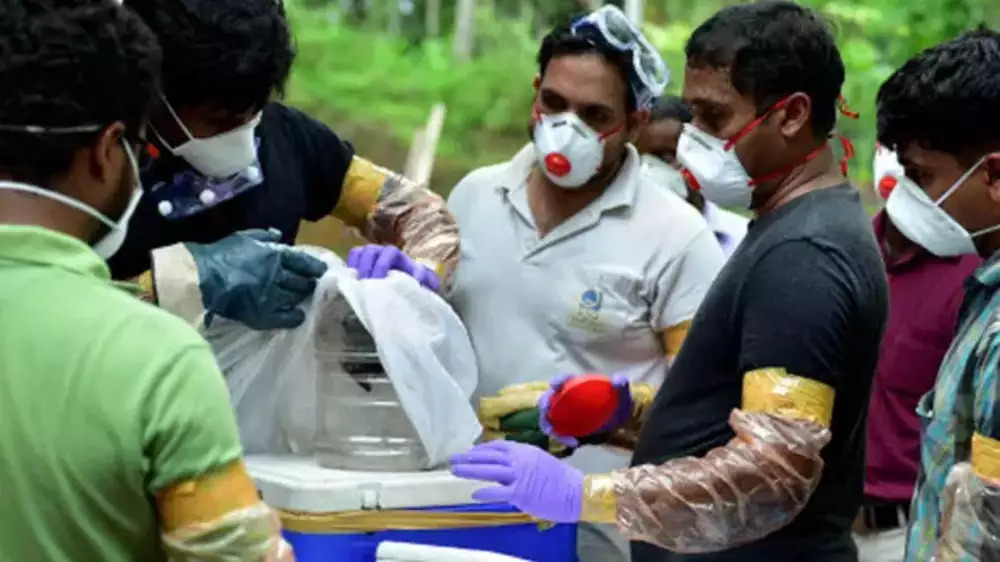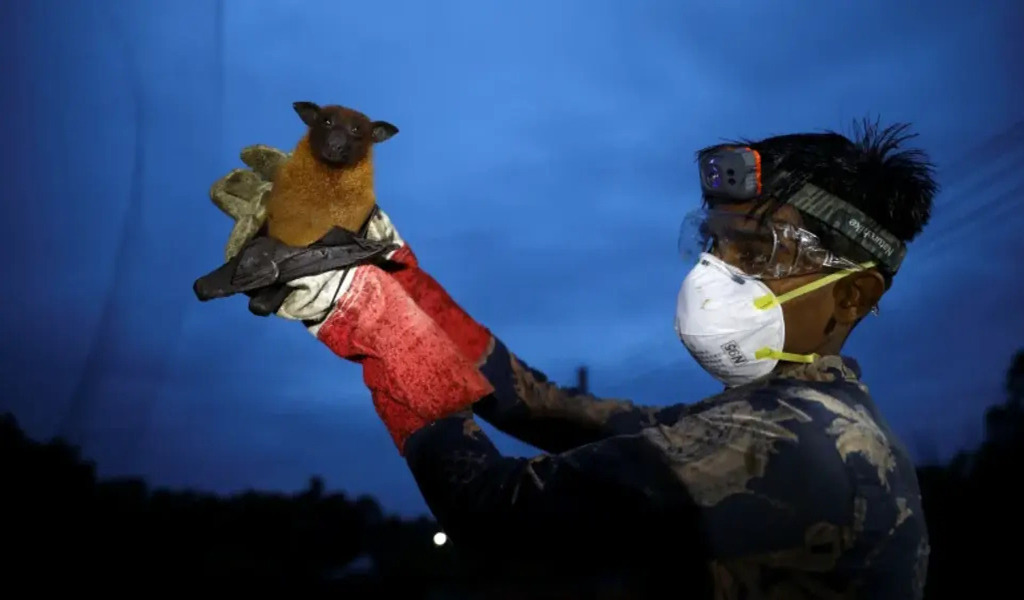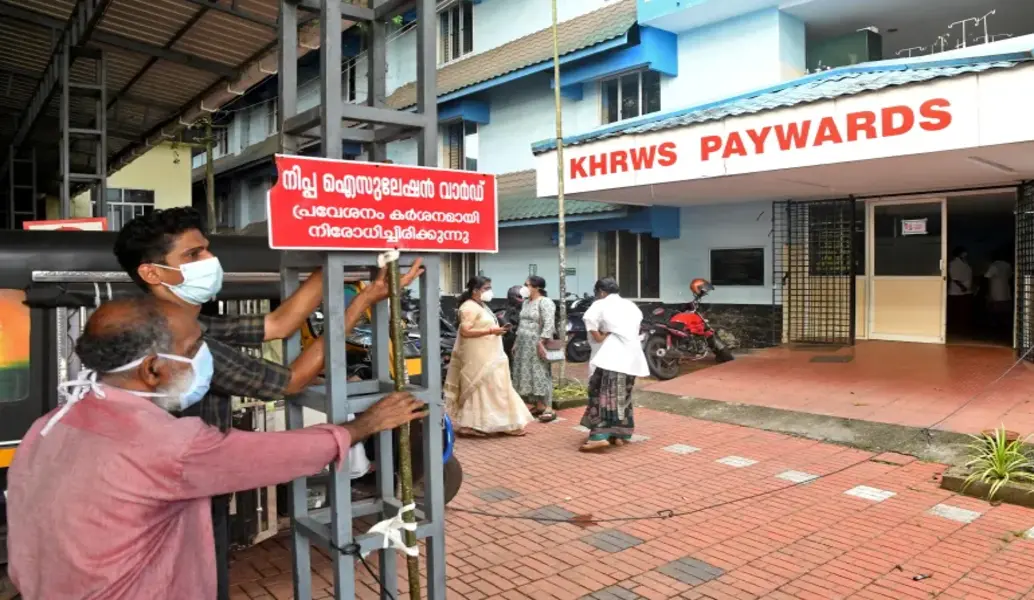(CTN NEWS) – In the southern state of Kerala, a 24-year-old healthcare worker has become the fifth individual to test positive for the Nipah virus.
This confirmation came after the individual, employed at a private hospital in Kozhikode, underwent testing, as stated by Veena George, the Health Minister of Kerala.
In response to this concerning development, the Kerala state government has intensified its efforts to save a nine-year-old boy who is currently battling this deadly infection.
To this end, they have taken the significant step of ordering the sole available antiviral treatment for Nipah virus infection, a monoclonal antibody supplied by ICMR, even though its clinical efficacy has not yet been definitively established.
Latest Updates on Nipah Virus Outbreak in Kerala
Veena George, Kerala’s Health Minister, also reported that the nine-year-old boy is currently on ventilator support at a hospital in Kozhikode, and his condition remains critical.
Furthermore, as part of its strategy to curb the spread of the lethal Nipah virus, the Kerala government has issued orders to temporarily close all educational institutions in Kozhikode and other containment zones.
It is worth noting that the virus strain identified in the state is the Bangladesh variant, which is known to spread from person to person and carries a high mortality rate, although it is less infectious, according to earlier statements by the Kerala government.
The State Health Minister provided reassurance by stating that the condition of all 76 individuals categorized as high-risk contacts remains stable.
Additionally, 13 individuals exhibiting mild symptoms are currently under hospital observation, with only the child receiving treatment in the Intensive Care Unit.

Here is the information available about the Nipah virus:
What is the Nipah virus?
The Nipah virus (NiV), as described by the Centers for Disease Control and Prevention (CDC), was initially identified in 1999 during an epidemic that affected both pigs and humans in Malaysia and Singapore.
This outbreak resulted in nearly 300 human cases and over 100 fatalities. The economic impact was substantial, with more than one million pigs being culled to control the disease’s spread.
In response to the latest outbreak of the virus, Health Minister Veena George has emphasized the importance of early contact tracing and the isolation of individuals displaying symptoms.
Stringent measures have been implemented, including restrictions on public movement in certain areas of the state to contain the medical crisis.
The state of Kerala has experienced its fourth outbreak of the virus since 2018, leading to the establishment of containment zones in at least seven villages within the Kozhikode district.
Medical personnel in direct contact with infected individuals are being quarantined to prevent further transmission.
The initial victim of this outbreak was a small landholder from the village of Marutonkara in the Kozhikode district.
The victim’s daughter and brother-in-law have also been infected and are currently in isolation, with additional family members and neighbors undergoing testing.
The second death in this outbreak was linked to contact within a hospital, but it is important to note that the two individuals were not related.
To further investigate this situation, three federal teams, including experts from the National Virology Institute, are scheduled to arrive for additional testing.
Nipah Virus: Origins, Transmission, and Impact
The Nipah virus, a deadly pathogen, was first discovered in 1999 during an outbreak among pig farmers and individuals closely associated with pigs in Malaysia and Singapore.
Although no further outbreaks of NiV have been reported in Malaysia and Singapore since 1999, cases have continued to emerge almost annually in various parts of Asia, primarily in Bangladesh and India.
NiV is classified as a zoonotic virus, indicating that it initially spreads between animals and humans. Fruit bats, also known as flying foxes and belonging to the genus Pteropus, serve as the primary animal host reservoir for NiV. T
he virus can be transmitted through contact with infected fruit bats, pigs, and even through human-to-human contact, such as via saliva or urine.

The initial transmission from an animal to a person is referred to as a spillover event, and once an individual is infected, NiV can spread from person to person.
Human infections can range from asymptomatic cases to acute respiratory infections, including both mild and severe cases, as well as encephalitis, which involves swelling of the brain and can lead to coma within 24-48 hours.
Encephalitis has a mortality rate ranging from 40 to 75 percent, according to data from the World Health Organization (WHO).
Survivors of acute encephalitis may fully recover, but some may experience long-term neurological conditions, such as seizure disorders and personality changes.
Additionally, a small percentage of survivors may experience relapses or develop delayed-onset encephalitis, as noted by the WHO.
Nipah Virus: Symptoms
Symptoms for Nipah Virus include
- Fever
- Headaches
- Myalgia
- Vomiting
- Sore throat
- Dizziness
- Drowsiness
- Altered consciousness
- Neurological signs that indicate acute encephalitis

Preventing Nipah Virus Infection: Strategies and Recommendations
As of now, there are no available vaccines for the Nipah virus. Drawing from past outbreaks, maintaining stringent cleanliness and disinfection protocols on pig farms, employing suitable detergents, can be a valuable preventive measure.
In the event of suspected outbreaks among animals, immediate quarantine measures are crucial. The World Health Organization (WHO) has advised the potential necessity of “culling infected animals,” ensuring the careful handling and d
isposal of carcasses through either burial or incineration to mitigate the risk of transmission to humans.
Given the absence of specific Nipah virus vaccines, raising awareness about the associated risk factors and educating individuals about essential precautions remains the primary means of reducing or preventing human-to-human transmission.
Standard disease control practices should also be rigorously followed.
To mitigate the risk of international transmission through fruits or fruit products contaminated with fluids from infected fruit bats, it is advisable to thoroughly wash and peel produce before consumption.
Fruits displaying any signs of bat bites should be discarded as an additional precautionary step.
RELATED CTN NEWS:
China Appoints New Ambassador To Taliban-Led Afghanistan Amid Diplomatic Uncertainty
Libya’s Death Toll Surpasses 6,000 In Devastating Floods, Urgent Burial Efforts Underway
CDC Director Approves Widespread Use Of Updated COVID-19 Vaccines For All Ages





